Oct 19, 2025
Oct 19, 2025
The debate in Britain in the 19th century was centered around the form imperial administration should take. While one school of thought spoke for preserving as much as possible the culture of the countries under rule, others spoke of supplanting native systems by a wholly British one. This school of thought was also fiercely orthodox, promoting the preaching of Christianity as one of the main aims of empire.
The nineteenth century British paramountcy searched for an appropriate style for its architecture. Although there was room for exoticism, by and large the esthetical values of a ‘Christian civilization’ were espoused by Pugin and Ruskin and the classical pattern book ceded to the ‘Ecclesiologist’ for churches in India as well as in England right from the early 19th century.
The Empire derived its moral legitimacy from its ‘burden’ to spread civilization and universal values among the peoples of the world. India was seen as a morally degenerate civilization, which though once great had slipped from the true path of progress, mainly by a rigid system of caste and exploitation by the rulers. If Empire had to rule, it had to be seen to be ruling, and this was to be expressed, among other things, in the buildings constructed by the British. What had started in the early days as utilitarian architecture – forts and military buildings – evolved by the late 19th century into a full-fledged search for form and meaning, an architecture appropriate to the most valuable possession of the British crown – India.
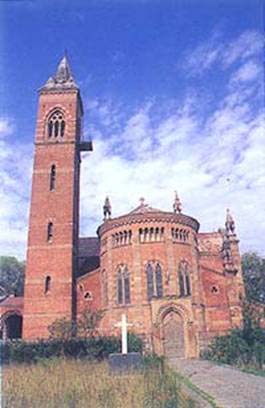 Colonial architecture in India closely followed the developments in the metropole – but also sought, for greater legitimacy, inspiration from existing architecture in India, sometimes with quite unexpected results.
Colonial architecture in India closely followed the developments in the metropole – but also sought, for greater legitimacy, inspiration from existing architecture in India, sometimes with quite unexpected results.
From the 1840s it was the norm for the Anglo-Indian church builder to follow the precedent set by the revivers of the many permutations of Gothic in England. Most usually, fervent ethical principle – and imperialism – rather than practicality recommended the translation to India of the great expanse of glass that was the principal characteristic of British Perpendicular Gothic. Other mediaeval styles, weightier than Gothic, served for momentous exercises such as the Mutiny Memorial Church (aka All Souls Cathedral) at Kanpur – or the last garrison church built in New Delhi by Lutyens’ associate.
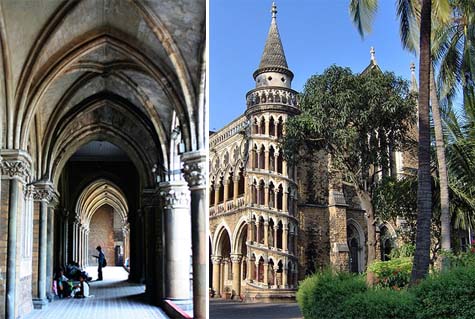 The Italian Gothic preferred by John Ruskin for secular works, and applied most influentially to public buildings in England, was seen to be well adapted to conditions in India. After numerous essays in northern styles, the masterly ‘Venetian’ designs sent out by Sir Gilbert Scott for Bombay University were decisive.
The Italian Gothic preferred by John Ruskin for secular works, and applied most influentially to public buildings in England, was seen to be well adapted to conditions in India. After numerous essays in northern styles, the masterly ‘Venetian’ designs sent out by Sir Gilbert Scott for Bombay University were decisive.
The hybrid aspect of this style that Scott devised for Bombay, though still foreign and historicist, was a crucial pointer for English builders away from a narrow cultural chauvinism towards a building style more ‘Indian’. This would be the beginnings of a truly imperial style that reached its apogee at New Delhi.
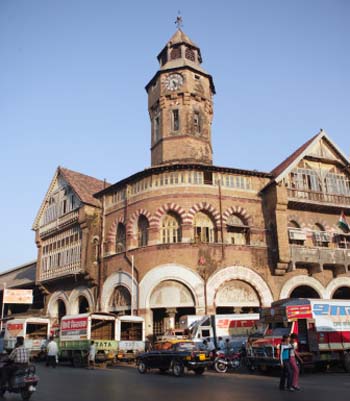 These developments may be traced primarily in the great public building campaign launched in Bombay in the second half of the 1860s by the energetic Governor, Sir Bartle Frere – of which Scott’s buildings were so significant a product. The campaign opened with the Decorated Gothic scheme for the rebuilding of St. Thomas’s cathedral by the Government Architect, James Trubshaw. This was only partially realised but Trubshaw made a weighty contribution, in collaboration with W. Paris, in the General Post and Telegraph Office of 1872.
These developments may be traced primarily in the great public building campaign launched in Bombay in the second half of the 1860s by the energetic Governor, Sir Bartle Frere – of which Scott’s buildings were so significant a product. The campaign opened with the Decorated Gothic scheme for the rebuilding of St. Thomas’s cathedral by the Government Architect, James Trubshaw. This was only partially realised but Trubshaw made a weighty contribution, in collaboration with W. Paris, in the General Post and Telegraph Office of 1872.
Of other landmarks produced by the campaign, William Emerson’s Crawford Market – in an elementary Northern Gothic delineated in the various colored stones which contributed so much to the Gothic revival in Bombay – reflected the ideals of the early design reformers at home more nearly than any other prominent Anglo-Indian buildings of the period.
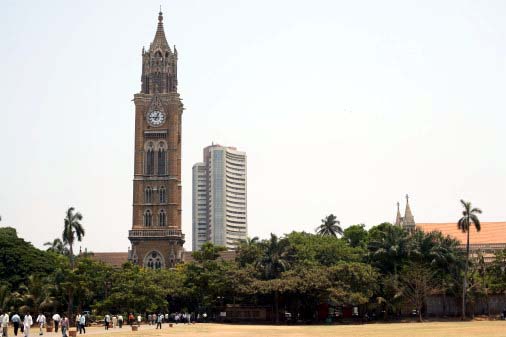 For the Public Works Secretariat, Colonel Henry St. Clair Wilkins, Royal Engineers, followed Scott’s lead with a Venetian Gothic design in 1877 and his colleague, Colonel John Fuller mixed Venetian and Early English for the stupendous High Court of 1879.
For the Public Works Secretariat, Colonel Henry St. Clair Wilkins, Royal Engineers, followed Scott’s lead with a Venetian Gothic design in 1877 and his colleague, Colonel John Fuller mixed Venetian and Early English for the stupendous High Court of 1879.
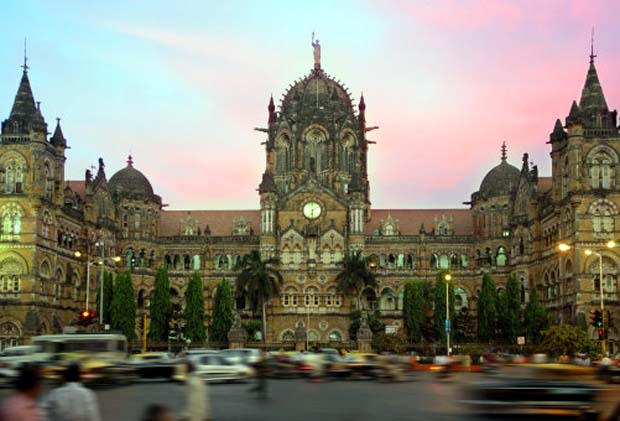
The culminating masterpieces of the series, increasingly hybrid in style, are Frederick Stevens’ works, especially Victoria Terminus (1878-87), the headquarters of the Great Indian Peninsular Railway.
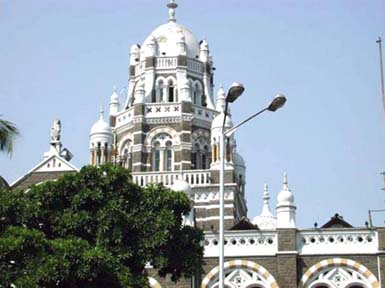
Like Scott’s University buildings, the Venetian Gothic of Stevens’ splendid terminus is infused with Indian decorative elements. Stevens was also responsible for the municipal buildings built in 1893 opposite Victoria Terminus and for the slightly later Bombay, Baroda and Central Indian Railway Terminus at Churchgate.
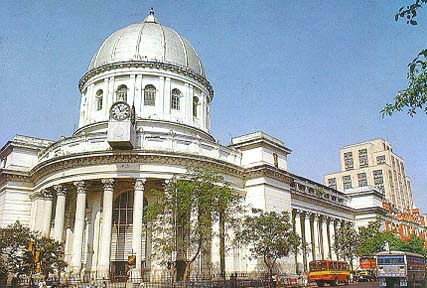
Innovation did not stop here. With his Calcutta General Post Office, Walter Cranville fused the Classical and Baroque.
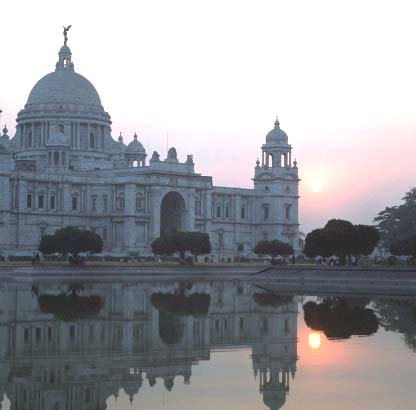
For the Victoria Memorial at the other end of the Maidan, William Emerson tried to emulate the Taj Mahal in material if not in form.
This last was a symptom of ‘Indo-Saracenic’ hybridisation, and was increasingly being attempted at different sites in the subcontinent, as at St. John’s College, Agra, and the High Court, Madras, in addition to the already existing mid-18th century Chepauk Palace, Madras.
08-Aug-2004
More by : Ashish Nangia

|
this site is gives very precised info about the monuments. this was very helpful for my report. |